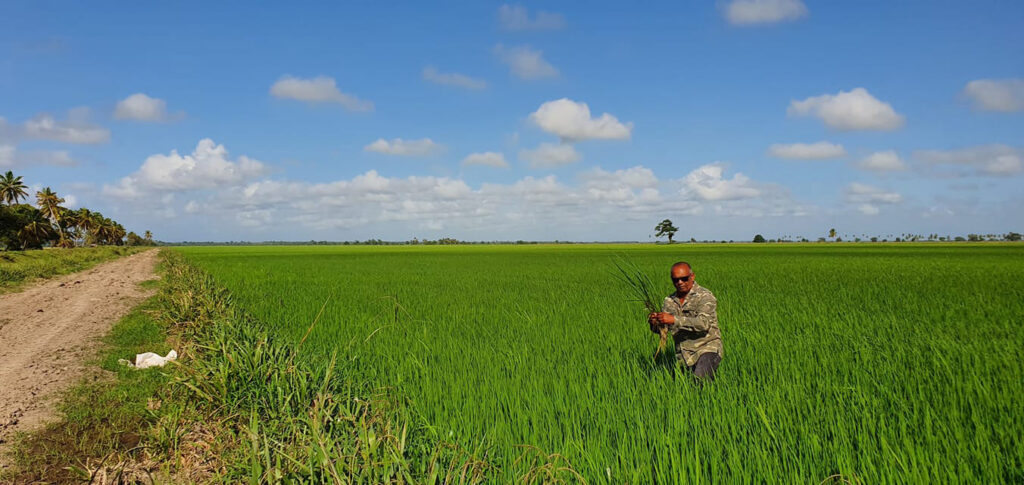Agriculture in Guyana plays a vital role in the country’s economy, employing a significant portion of the population and contributing to food security, exports, and rural development. Here’s an overview of the sector:
Key Features of Agriculture in Guyana
Geography & Climate
- Most agriculture is concentrated along the coastal plains, where soils are fertile and irrigation infrastructure is established.
- The tropical climate and abundant rainfall are favorable for year-round cultivation.
- Flooding and rising sea levels are challenges, requiring effective water management and drainage systems.
Major Agricultural Products
1. Rice
- Guyana is one of the top rice producers in the Caribbean.
- Rice is grown mainly in Regions 2, 3, 5, and 6.
- Significant export markets include Latin America, the Caribbean, and Europe.
- The Guyana Rice Development Board (GRDB) oversees production, research, and quality control.
2. Sugar
- Historically a major export crop, but production has declined due to financial struggles and restructuring of GuySuCo (Guyana Sugar Corporation).
- Main estates: Albion, Blairmont, Uitvlugt.
- Sugar remains a key employer and export earner.
3. Cash Crops
- Includes plantains, bananas, cassava, sweet potatoes, and coconuts.
- Grown mainly for domestic consumption and local markets.
4. Fruits & Vegetables
- Includes pineapples, mangoes, watermelon, peppers, tomatoes, and bora (long beans).
- Increasing focus on export to Caribbean and North American markets.
5. Livestock
- Cattle, pigs, sheep, goats, and poultry are reared primarily for local consumption.
- Dairy production is growing, but still limited in scale.
6. Aquaculture & Fisheries
- Guyana has a large fishing industry, including shrimp, tilapia, and catfish (basa) farming.
- Marine shrimp is a significant export.
Challenges in Guyanese Agriculture
- Flooding and climate change
- Aging infrastructure (canals, sluices, dams)
- Access to credit and technology for small farmers
- Limited value-added processing
- Need for modernization and mechanization
Innovation & Support
- Government Initiatives:
- Investment in drainage and irrigation systems
- Support for agro-processing and youth in agriculture
- International support from organizations like FAO, IDB, and the EU
- Programs to support climate-smart agriculture, especially in hinterland regions
Economic Impact
- Agriculture contributes around 20–25% of non-oil GDP.
- Employs roughly 17–20% of the labor force.
- Plays a critical role in food security and rural livelihoods.


